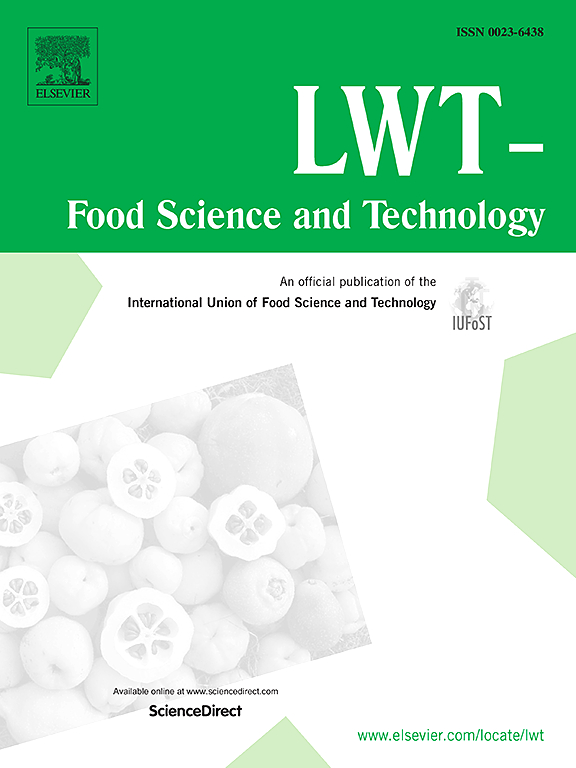Characterization of green pepper distribution on a spiral curved surface
IF 6
1区 农林科学
Q1 FOOD SCIENCE & TECHNOLOGY
引用次数: 0
Abstract
Green pepper (Zanthoxylum armatum) has significant culinary value, but its high separation costs limits industry development. This study developed a cost-effective method for separating green pepper particles using a spiral curved surface, demonstrating significant economic advantages compared to manual and color sorting approaches. Through dynamic analysis, Discrete Element Method (DEM) simulations, and laboratory experiments, the distribution of particles along the spiral surface was studied. Results indicated that feeding velocity, position, helix angle, and radial inclination are key factors affecting particle movement. An equilibrium velocity model was developed to determine the feeding velocity, while an action mechanism model was used to examine the impact of these factors on separation efficiency. The optimal separation parameters were identified and experimentally validated as a helix angle () of 60°, a radial inclination angle () of 20°, and a feeding radius () of 70 mm. The findings of this investigation, may provide a theoretical basis for the creation of low-cost separation technologies and equipment prototypes for granular materials, particularly green pepper, with potential benefits for global food safety.
求助全文
约1分钟内获得全文
求助全文
来源期刊

LWT - Food Science and Technology
工程技术-食品科技
CiteScore
11.80
自引率
6.70%
发文量
1724
审稿时长
65 days
期刊介绍:
LWT - Food Science and Technology is an international journal that publishes innovative papers in the fields of food chemistry, biochemistry, microbiology, technology and nutrition. The work described should be innovative either in the approach or in the methods used. The significance of the results either for the science community or for the food industry must also be specified. Contributions written in English are welcomed in the form of review articles, short reviews, research papers, and research notes. Papers featuring animal trials and cell cultures are outside the scope of the journal and will not be considered for publication.
 求助内容:
求助内容: 应助结果提醒方式:
应助结果提醒方式:


